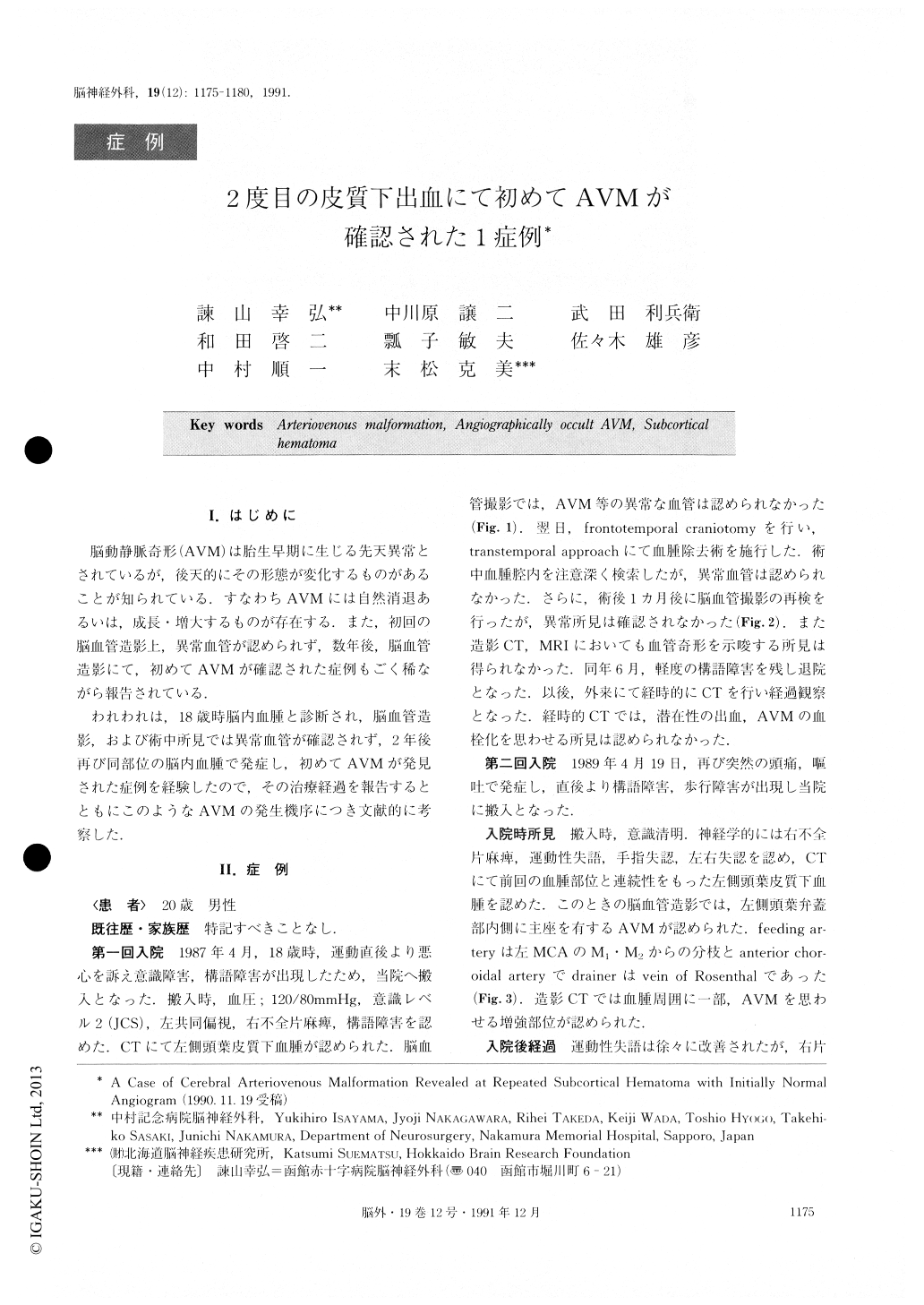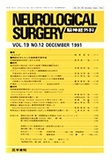Japanese
English
- 有料閲覧
- Abstract 文献概要
- 1ページ目 Look Inside
I.はじめに
脳動静脈奇形(AVM)は胎生早期に生じる先天異常とされているが,後天的にその形態が変化するものがあることが知られている.すなわちAVMには自然消退あるいは,成長.増大するものが存在する.また,初回の脳血管造影上,異常血管が認められず,数年後,脳上血管造影にて,初めてAVMが確認された症例もごく稀ながら報告されている.
われわれは,18歳時脳内血腫と診断され,脳血管造影,および術中所見では異常血管が確認されず,2年後再び同部位の脳内血腫で発症し,初めてAVMが発見された症例を経験したので,その治療経過を報告するとともにこのようなAVMの発生機序につき文献的に考察した.
An 18-year-old male admitted to our hospital suffered left temporal subcortical hemorrhage. No abnormality was demonstrated on carotid or vertebral angiography at that time. On the day following the onset, left fron-totemporal craniotomy was performed and the subcor-tical hematoma was evacuated. No vascular malforma-tion was found despite careful investigation. On 30th day after the onset, the repeat cerebral angiography was performed but failed to show any vascular abnor-malities. Just two years after the first op-eration he suffered a second left temporal hemorrhage. Cerebral angiography was repeated and a temporal arterioveous malformation (AVM) was found with feeding vessels from the M-1 and M-2 portion of the left middle cerebral artery and from the left anterior choroidal artery, and draining veins to vein of Rosen- thal and the straight sinus. One month after the second hemorrhage, left frontotemporal craniotomy was per-formed and complete excision of the AVM was carried out.
Only five cases of AVMs in patients with normal angiograms several years before have been reported previously in the literature. But there are no cases in which surgery has been performed. Differently to those cases, in this case it was investigated operatively whether there was a vascular abnormality at the first hemorrhage. We didn't think, however, that the AVMdemonstrated at the second hemorrhage had developed spontaneously because there had been a hemorrhage of unknown origin previous to it. It was assumed that a small angiographically occult AVM connected to the hematoma cavity existed at the time of the first hemor-rhage but it was too small to be found even during sur-gical procedure. Such an angiographycally occult AVM had been growing for two years, and its growth had probably been facilitated by the presence of the hema-toma cavity left after the first operation.

Copyright © 1991, Igaku-Shoin Ltd. All rights reserved.


